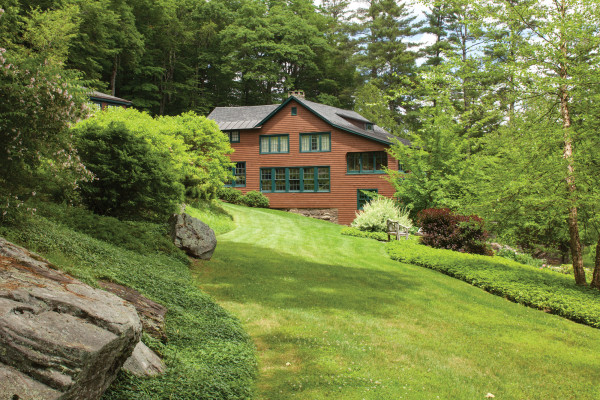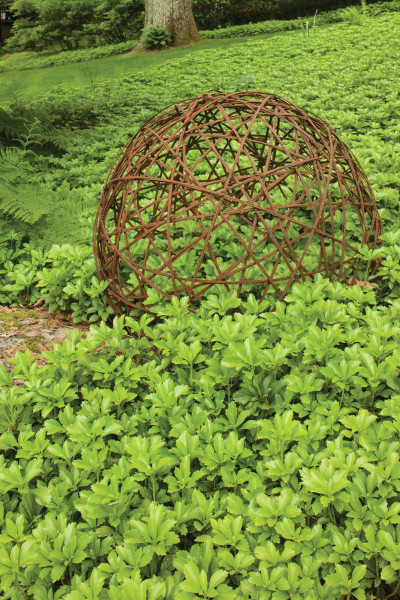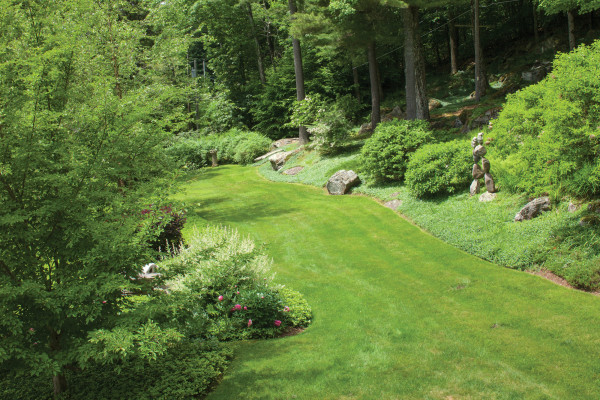
Original vinca planted as a groundcover has escaped to climb the hill.
Mick Hales
In the quest to simplify maintenance of the extensive gardens at Wildmuir, landscape architect Jamie Purinton recommended underplanting shrubbery with living groundcovers. The naturalized effect is in keeping with Arts & Crafts tenets—and it avoids mulch.
Mulching is a costly and time-intensive practice that alters the site’s natural soil conditions. Spreading groundcovers fill space among larger plants and discourage weeds from taking root. When Purinton installed the hedge of dwarf river birch at Wildmuir, she carpeted beneath the shrubs with an even mixture of Labrador violet (Viola labradorica), barren strawberry (Waldsteinia fragarioides), blue speedwell (Veronica ‘Waterperry Blue’), and sweet woodruff (Galium odoratum). “The result is a lively tapestry of bloom and foliage,” says Purinton. Vinca and pachysandra were already on site. No mulch needed.

Across the swath of lawn, stewartia, purple smokebush, and variegated willow grow up from a carpet of pachysandra, also original to the garden.
Mick Hales
Planted about six inches apart, the chosen groundcovers expanded rapidly in Wildmuir’s Zone 4 conditions, keeping weeds at bay. The challenge was to find plants that would endure a variety of conditions. Veronica prefers full sun, so it was positioned toward the front of the border. Violets and barren strawberries bridge the full sun/partial shade areas closer to the shrubs’ skirts. Sweet woodruff tolerates full shade beneath branches.
Ultimately, the groundcovers will fill in and even spread in their favored niche, as the shrubs grow. It’s an ingenious solution now with vision for the future.
Groundcovers
Always research what is hardy in your zone, and what is best for the specific situation. Besides sun or shade tolerance, consider hardiness to foot traffic, wet and dry tolerance, and height.
Good groundcovers include sedums, tiarellas, ferns, sedges (carex species), and varieties of creeping thyme.

Peonies and variegated willow add color.
Mick Hales
Energetic spreaders work in some situations: bugleweed (ajuga cultivars), creeping Jenny (Lysimachia nummularia), Jill-over-the-ground (Glechoma hederacea), and lily-of-the-valley (Convallaria majalis). Ask at a local nursery. Test a small sample in one area before investing in a large quantity.







